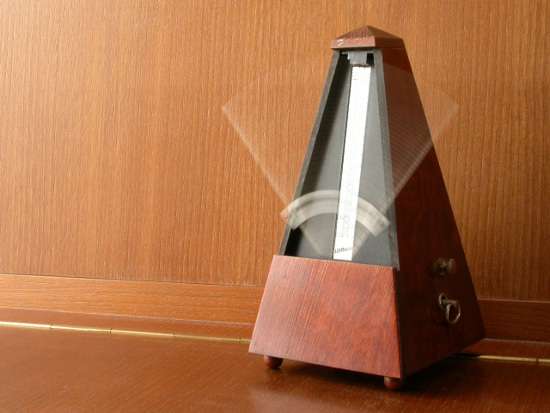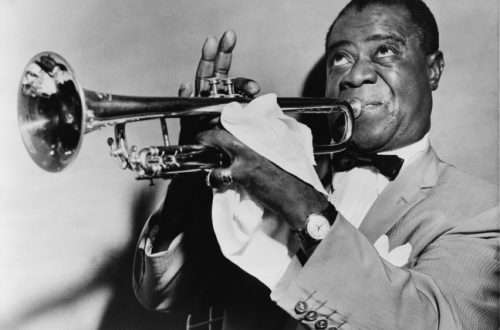
A musical and hardware dictionary for beginner keyboard players
Probably every field produces a special terminology for its own needs. This is the case with music and with the construction of instruments. There is also marketing and market terminology; it happens that similar technical solutions may have different names depending on the manufacturer. It is no different with keyboards. Below is a short glossary explaining the most important musical and hardware terms.
Basic musical terms Apart from the melody, the meaning of which is quite obvious, the piece consists of; the tempo which determines the speed of the performance and, in a way, the nature of the piece, the rhythm which orders the duration of the notes in the piece in relation to each other but within the tempo (the length of the note is determined by the length of the note, e.g. half note, quarter note etc. but the actual duration is a tempo-dependent, such as a slow-paced half-note lasts longer than a fast-paced half-note, while the ratio of length to other notes at a single tempo is always the same). In addition to them, we hear harmony in the piece, i.e. how the sounds resonate with each other, as well as articulation, i.e. the way the sound is extracted, which affects the sound, expression and decay time. There is also dynamics, often confused with tempo by non-musicians. Dynamics do not determine the speed, but the strength of the sound, its loudness and emotional expression.
The most noticeable bane of a beginner musician are; correct rhythm and maintaining the pace. To develop your ability to keep pace, practice using the metronome. Metronomes are available as built-in functions for parts of pianos and keyboards, and as standalone devices. You can also use the built-in drum tracks as a metronome, but you need to be able to choose a backing track with a rhythm that matches the song you’re practicing.

Hardware terms
After touch – keyboard function, which allows, after hitting, to influence the sound by pressing a key additionally. It can often be assigned various actions, such as triggering effects, changing modulation, etc. The function does not exist in acoustic instruments, except for a virtually unheard of clavichord, on which the sound of vibrato can be played in this way.
Auto accompaniment – keyboard layout that automatically plays accompaniment to the main melody line played with your right hand. When using this function, playing with the left hand is limited to selecting the harmonic function by playing the appropriate chord. Thanks to this function, a single keyboardist can play alone for the entire pop, rock or jazz band.
Arpeggiator – a device or built-in function that automatically plays an arpeggio or trill by simply selecting a chord, two-note, or a single note. Used in electronic music and synth-pop, not useful for a pianist.
DSP (Digital Signal Processor) – sound effects processor, allows you to add reverb, chorus functions and more. Synth-action keyboard – a light keyboard, supported by rubber bands or springs. Unless specified as dynamic, it does not react to the force of impact. Similar feelings accompany the organ keyboard, while playing it is completely different from playing the piano.
Dynamic keyboard (touch responsive, touch sensitive) – a type of synthesizer keyboard that registers the strength of the strike and thus allows you to shape the dynamics and better control the articulation. Keyboards marked in this way do not have a hammer mechanism or any weighting what makes them feel different from the playing than a piano or piano keyboard and are less comfortable.
Semi-weighted keyboard – this type of keyboard has weighted keys that work better together and give better playing comfort. However, it is still not a keyboard that reproduces the piano feeling. Hammer-action keyboard – A keyboard featuring a hammer-action mechanism that simulates the mechanism found in pianos and grand pianos to provide a similar playing feel. However, it lacks the gradation of the key resistance that occurs in acoustic instruments.
Progressive hammer-action keyboard (graded hammer weighting) – In Poland, often referred to as the simple term “hammer keyboard”. The keyboard has more resistance in the bass keys and less resistance in the treble. The better models have heavy keys made of wood that give an even more realistic feel.
You can also meet other English names, such as “graded hammer action II”, “3rd gen. Hammer action”, etc. These are trade names that are to convince a potential buyer that the offered keyboard is some other generation, better than the previous one or better than the keyboard competition with a lower number. In fact, remember that each model of an acoustic piano has slightly different mechanics, and each person has a slightly different physiognomy. So there is no one perfect piano, not a single perfect hammer-action keyboard model that could pretend to be the perfect piano keyboard. When deciding to buy a particular model, it’s best to try it out personally.
Hybrid piano – a name used by Yamaha for a series of digital pianos in which the keyboard mechanism is borrowed directly from an acoustic instrument. Other companies have a different philosophy and focus on reproducing the feel of a piano keyboard through different mechanisms.
MIDI – (Musical Instrument Digital Interface) – digital note protocol, enables communication between synthesizers, computers and MIDI keyboards, so that they can control each other, defining, among other things, the pitch and length of the notes, and the effects used. Attention! MIDI transmits no audio, only information about the notes played and the digital instrument settings.
Multimbral – polyphonic. Specifies that the instrument can play many different sounds simultaneously. For example, synthesizers and keyboards with Multimbral functionality can use multiple timbres simultaneously.
Polyphony (ang. polyphony) – in terms of hardware, this term is used to describe how many tones can be emitted simultaneously by the instrument. In acoustic instruments, the polyphony is limited only by the scale and capabilities of the player. In electronic instruments, it is often limited to a certain number (e.g. 128, 64, 32), so that in more complex pieces that use reverberation, there may be a sudden cut-off of sounds. In general, the bigger the better.
Sequencer (the. sequencer) – formerly mainly a separate device, nowadays mostly a built-in function in the synthesizer, causing the selected sequence of sounds to be played automatically, which allows you to continue playing while changing the settings of the instrument.
Silent piano – a trade name used by Yamaha to denote acoustic pianos with a built-in digital equivalent. These pianos are as loud as other acoustic pianos, but when they switch to digital mode, the stringing stops and the sound is delivered to the headphones via the electronics.
sustain – Sink pedal or pedal port.
Comments
I have a question that has been bothering me since last year. Why does the product range start to lose weight?
EDward





